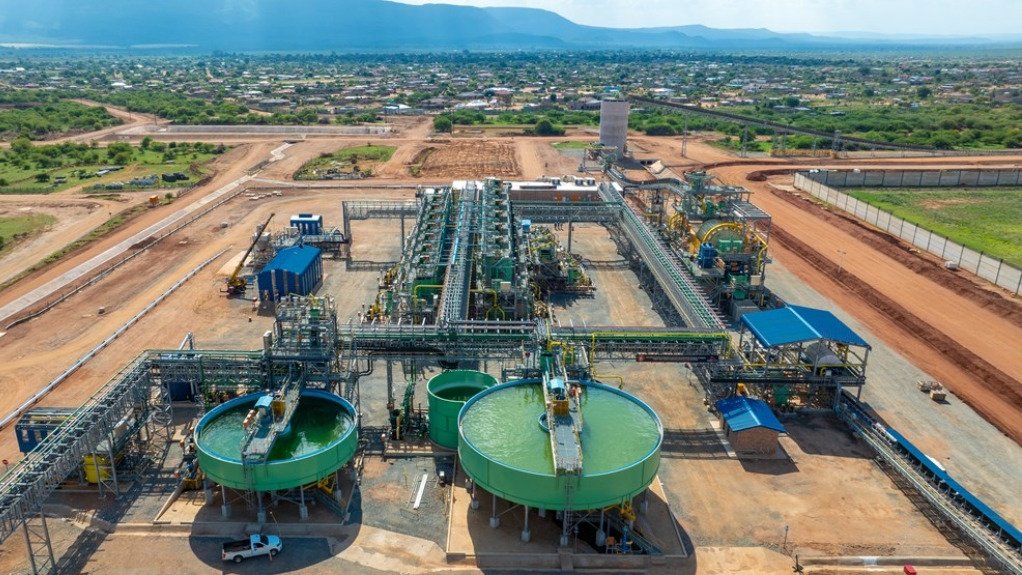
+27 11 441 1111
SRK House, 265 Oxford Road, Illovo, 2196, South Africa

Platreef palladium/rhodium/nickel/platinum/copper/gold project, South Africa


Name of the Project
Platreef palladium/rhodium/nickel/platinum/copper/gold project.
Location
The Platreef project hosts an underground deposit of thick platinum group metals (PGMs), nickel, copper and gold mineralisation on the northern limb of the Bushveld Igneous Complex, in Limpopo, South Africa.
This is about 280 km north-east of Johannesburg and 8 km from the town of Mokopane.
On the northern limb, PGM mineralisation is primarily hosted within Platreef, a mineralised sequence traced for more than 30 km along strike.
Project Owner/s
Diversified mining company Ivanhoe Mines indirectly owns 64% of the Platreef project through its subsidiary, Ivanplats, and is directing all mine development work.
The South African beneficiaries of the approved broad-based black economic-empowerment structure have a 26% stake in the project.
The remaining 10% is owned by a Japanese consortium comprising Itochu Corporation; Japan Oil, Gas and Metals National Corporation; Itochu affiliate ITC Platinum Development; and Japan Gas Corporation.
Project Description
Platreef is one of the largest undeveloped precious metals deposits globally, with 56-million ounces in platinum equivalent indicated mineral resources and 74-million ounces in platinum equivalent inferred mineral resources at a 2 g/t platinum, palladium, rhodium and gold (3PE+Au) cutoff. Platreef is also one of the world’s largest undeveloped nickel sulphide resources.
The project, within the Platreef’s southern sector, comprises two contiguous properties: Turfspruit and Macalacaskop. Turfspruit, the northernmost property, is contiguous with, and along strike from, Anglo Platinum’s Mogalakwena group of mining operations and properties.
The mining of the Platreef deposit will occur between 700 m and 1 200 m depth.
The mining areas will be accessed by each of the shafts to the three main underground access levels
(750 m, 850 m, and 950 m levels).
Shaft 1 has a nameplate hoisting capacity of up to one-million tonnes a year. Shaft 2 will have a hoisting capacity of eight-million tonnes a year and will be one of the largest and highest-capacity shafts in Africa.
Shaft 3 will provide an additional four-million tonnes a year of hoisting capacity.
Once Shaft 3 is operational, the nameplate hoisting capacity of Shaft 1 will be temporarily decreased to hoist only labour and materials, while Shaft 3 hoists exclusively ore and waste rock.
The hoisting capacity of Shaft 1 will return to its original one-million tonnes a year once Shaft 2 is operational.
Each of these main levels provides access for labour, and materials and ore transfer, to the hoisting shafts.
The main access levels also connect to the interlevel development areas that access the stoping (production mining) areas.
Mining will be performed using highly productive mechanised methods, such as longhole stoping and drift-and-fill, using cemented backfill for maximum ore extraction
The phased expansion of PGM and base-metal production at Platreef will be achieved through the modular expansion of the concentrators. Every concentrator module will be designed and built using the same process design.
Phase 1 has a concentrator design capacity of 770 000 t/y.
The 2025 feasibility study on the Phase 2 expansion proposes a new 3.3-million-tonne-a-year concentrator module, built alongside the Phase 1 module, increasing the total Phase 2 processing capacity to 4.1-million tonnes a year – a near five-fold increase in 3PE+Au production to more than 460 000 oz of 3PE+Au, plus an estimated 9 000 t of nickel and 6 000 t of copper. The feasibility study estimates a life-of-mine (LoM) of 35 years.
The Phase 3 preliminary economic assessment (PEA) comprises a further two 3.3-million-tonne-a-year concentrator modules, built sequentially and located alongside the Phase 1 and 2 modules, which increases the total Phase 3 concentrator capacity to 10.7-million tonnes a year.
This expansion further doubles the annualised 3PE+Au production to more than one-million ounces of 3PE+Au, plus an estimated 22 000 t of nickel and 13 000 t of copper. The PEA estimates a 29-year LoM.
Potential Job Creation
Not stated.
Net Present Value/Internal Rate of Return
The 4.1-million tonne-a-year 2025 feasibility study generates an after-tax net present value (NPV), at an 8% discount rate, of $1.4-billion and an internal rate of return (IRR) of 20%, with a payback of 7.8 years.
The PEA generates an after-tax NPV, at an 8% discount rate, of $3.2-billion and an IRR of 25%, with a payback of 8.7 years.
Capital Expenditure
The 2025 feasibility estimates initial capital expenditure of $1.24-billion. The PEA estimates expansion capital of $803-million.
Planned Start/End Date
Phase 1 production is expected to start in the fourth quarter of 2025, with Phase 2 expansion accelerated to 2027.
The two additional 3.3-million-tonne-a-year concentrator modules in Phase 3 are expected to come online in 2030 and 2032.
Latest Developments
None stated.
Key Contracts, Suppliers and Consultants
OreWin – Australia (overall report preparation and economic analysis, mineral reserve estimation and mine plan); Mine Technical Services – US (mineral resource estimation); SRK Consulting – South Africa (mine geotechnical recommendations); DRA Global – South Africa (process and infrastructure); and WSP – South Africa (water and tailings management).
Contact Details for Project Information
Ivanhoe Mines, tel +27 11 088 4300 or email info@ivanhoemines.com.


